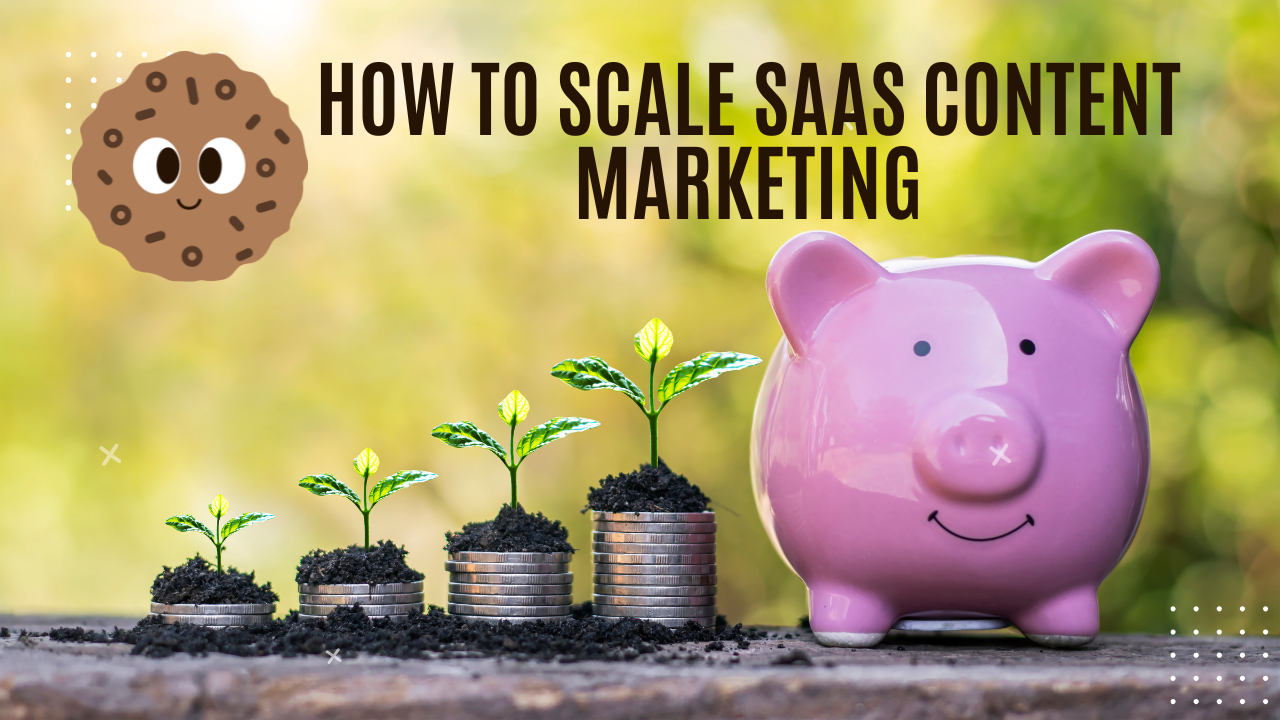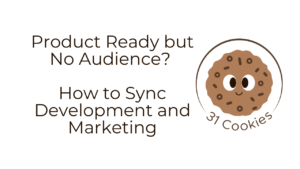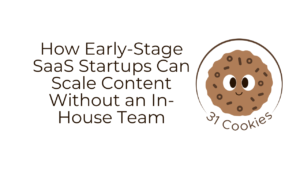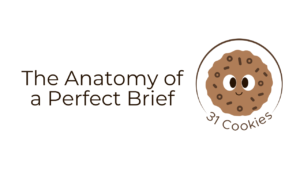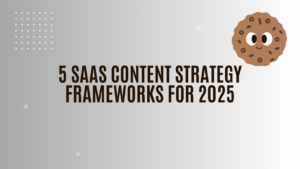A SaaS founder once joked that their content marketing strategy was, ‘just me, Google Docs, and a prayer.’ That was fine when they had fewer customers, but as their business grew, it was clear the strategy wouldn’t work.
They needed to scale fast.
Whether you’re a startup or a fast-growing business, there comes a point when scaling content marketing is necessary.
But how do you scale content marketing to create genuine connections?
In this blog, we’ll explore how to transform your SaaS content marketing from a small operation to a scalable powerhouse that drives real business results. ✅
Overview of SaaS content marketing
SaaS content marketing is a marketing tactic focused on creating and distributing valuable, relevant content to attract, engage, and convert prospects into customers of Software-as-a-Service (SaaS) businesses.
For SaaS businesses selling intangible, often complex solutions, content marketing is the key to translating their value into something tangible and relatable.
Some key characteristics of SaaS content marketing include:
- It’s educational, guiding the reader through the nuances of features
- It uses a mix of formats like blogs, whitepapers, webinars
- It’s built for the long haul, nurturing leads over time
Here’s why you need a scalable SaaS content marketing strategy:
- Meets growing demands: Top-of-funnel pieces draw people in, mid-funnel content nurtures leads, and bottom-of-funnel materials close deals
- Maintains quality: Audiences are sharp—they can spot generic, low-value fluff a mile away. A scalable approach ensures you maintain high-quality output that builds trust and delivers value
- Boosts cost efficiency: A scalable strategy lets you grow your production while keeping expenses in check, helping maintain profitability as you expand
- Enables market expansion: Whether it’s tailoring materials for different industries or geographies, scaling gives you the flexibility to grow without overburdening your team
Steps to Create Scaleable SaaS Content
Scaling SaaS content marketing doesn’t happen overnight. It requires careful planning, the right tools, and a clear understanding of your goals.
In this section, we’ll discuss the key steps to creating scalable SaaS content that supports both marketing and business objectives. 🎯
1. Understand the target audience
The first step is to understand the market landscape. To position your SaaS content effectively, identify industry trends, competitor strategies, and emerging needs. Tools like SEMrush or SimilarWeb can help gather insights.
Another excellent strategy is creating detailed buyer personas representing your ideal customers. These should include demographics, pain points, goals, and buying behaviors. A well-crafted persona helps tailor content that resonates with your audience.
📌Example: A project management SaaS company surveys users and discovers a growing demand for integrations with time-tracking tools. They publish blog posts and case studies showcasing their tool’s compatibility with leading time-trackers.
2. Set clear objectives
To create relevant content, you must define specific goals. Outline measurable objectives such as increasing website traffic by 30%, generating 100 qualified leads per month, or achieving a specific engagement rate on social media. These goals provide direction and benchmarks for success.
You also need to align your strategy with business objectives. Ensure your content marketing objectives directly support broader business goals, such as customer acquisition, retention, or brand positioning.
📌Example: A customer support SaaS sets a goal to boost their blog’s traffic by 50% in six months by publishing weekly SEO-optimized posts.
3. Develop a robust content strategy
There are three parts to developing a strong content strategy. Here are some considerations:
- Content Planning: Build a content calendar that maps out topics, formats, and publication schedules. This helps maintain consistency and prevents last-minute scrambles for ideas
- Content Formats: Diversify your content types to address various customer journey stages. Blog posts attract new prospects, while whitepapers, case studies, and webinars nurture and convert leads
- SEO Optimization: Conduct keyword research to identify relevant terms and optimize your content for search engines. This ensures better visibility and drives organic traffic
📌 Example: A marketing SaaS identifies keywords like ‘email campaign automation’ and optimizes blog posts and landing pages to rank for these terms.
4. Leverage automation tools
Use automation tools to streamline repetitive tasks, enhance efficiency, and ensure consistency across your content operations. Here are some types of tools you can use:
- Content Management Systems (CMS): Use platforms like WordPress or HubSpot to streamline content creation, scheduling, and publication processes
- Marketing automation tools: Tools like Mailchimp or Marketo help automate email campaigns, lead nurturing, and customer segmentation, saving time and improving efficiency
- Analytics platforms: Use tools like Google Analytics or Ahrefs to monitor content performance and identify opportunities for improvement
📌 Example: A SaaS platform for developers tracks which blog posts generate the most sign-ups using Google Analytics.
5. Establish a consistent brand voice
Create a comprehensive style guide that defines your tone, language, and messaging. This will ensure consistency across all content and reinforce your brand identity.
You must also conduct workshops and refreshers to ensure your team understands and adheres to these guidelines, especially as new members join or your brand evolves.
📌 Example: A fintech SaaS ensures all its content maintains a professional yet approachable tone, reflecting its ‘trusted partner’ positioning.
6. Optimize content distribution channels
To maximize your SaaS content marketing, identify where your target audience engages most, such as LinkedIn, industry blogs, newsletters, or niche forums. Focus your efforts on these platforms for better reach.
Next, tailor your content to each channel. Use concise, visual posts for social media while reserving in-depth articles for your blog. This ensures your content resonates and engages effectively across all platforms.
📌 Example: A SaaS for small business accounting focuses its efforts on LinkedIn and email newsletters to reach business owners and accountants. They use SaaS task management to create short, visual posts for Instagram while publishing in-depth tutorials on its blog.
7. Measure and analyze performance
Track Key Performance Indicators (KPIs) like traffic, conversion rates, bounce rates, and engagement to assess the effectiveness of your content strategy.
Use regular reporting to analyze trends, measure ROI, and identify areas for improvement. Tools like Tableau or Google Data Studio can help visualize performance for easier adjustments.
📌 Example: A marketing automation SaaS uses Tableau to visualize trends in its blog performance and adjusts its strategy based on insights.
8. Iterate and improve
Gather feedback from your audience through surveys, comments, and social media interactions. Internally, consult with sales and customer support teams to refine your content strategy based on customer insights.
Stay updated on industry trends, algorithm changes, and new content formats. Adjust your strategy regularly to keep your content relevant and competitive.
📌 Example: An e-commerce SaaS regularly updates its SEO strategy based on algorithm changes announced by Google.
Boost Your SaaS Content With 31 Cookies
Scaling your SaaS content marketing requires a strategic, targeted approach that evolves with your business growth. You must focus on your audience, set clear objectives, and use the right tools to ensure your content meets and exceeds expectations as you scale.
At 31 Cookies, we understand the nuances of scaling SaaS content marketing. From crafting tailored strategies to optimizing content workflows, we have the experience to help you grow efficiently.
Reach out to us today at 31 Cookies! ✔️

